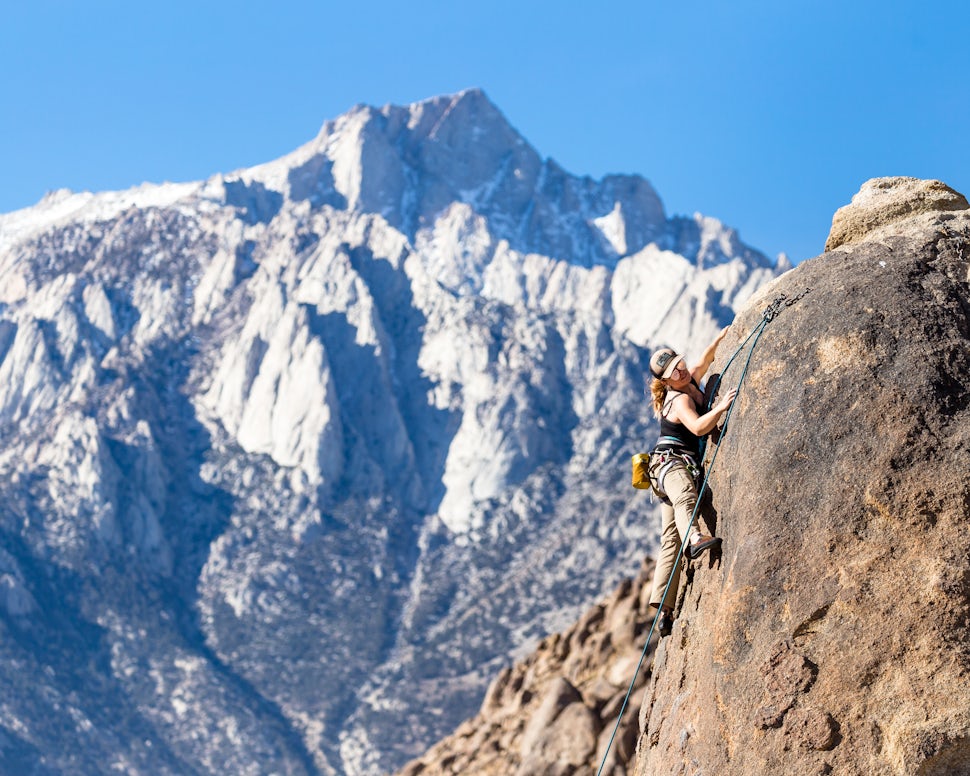5 Knots Every Adventurer Should Know
Make tying down or hanging up a cinch with this basic knot guide.

By now, most of us know how to tie our shoes and, for some, that’s as far as our “tying” knowledge goes. If you’re OK with this limitation, it’s cool with me; but if you’re tired of losing gear or having your slackline abruptly hit the ground, I’ve got you covered. Because knots aren’t just for Boy Scouts, climbers, and sailors, I’ve rounded up (what I consider to be) the top five basic knots every adventurer needs to know. Perfecting these knots will not only make your travels easier, bear box safer, and hammock more secure, they can also help you take over the world -- or at least the small piece of wilderness you may find yourself in.
1. Overhand Knot
Uses: To keep the end of a rope from untwisting; to make a knot at the end of a rope; first step in other knots.
To Tie: Make a loop near the end of the rope and pass the running end (free end of the rope) through the loop, pulling it tight.
2. Square Knot
Uses: Tie the ends of two ropes of the same size together. Good for bundling firewood or extending your hammock line.
To Tie: Lay the running end of each rope together but pointing in opposite directions. Tie the ends by taking right over left, and then tying again in the reverse direction -- left over right. Pull tight.
3. Slip Knot
Uses: Temporarily secure items while hoisting or climbing; temporary stopper knot; basic snare; will tighten around an object when pulled from the “short end”; will immediately untie when pulled from the other end.
To Tie: With the running end in your left hand, form a loop with the cord. Reach through the loop with right hand and pull the standing end (fixed end) of the cord through to form a loop. Pull on the loop to tighten the knot.
4. Bowline Knot
Uses: Easy to tie/untie, especially after having a load on it, making it a perfect knot for hanging your hammock or securing your bear box from a tree branch; makes an effective self-rescue knot you can tie around yourself; works well to pull against while hoisting a heavy load.
To Tie: Twist your rope to form a small loop leaving enough rope for the desired loop size on the running end. Pass the running end of the rope through the loop. Take the running end behind and around the fixed end of the rope and back through the small loop.
5. Trucker’s Hitch
Uses: Makes it easier to tighten up lines and tie down long spans of rope; good for tying down tarps, tent guylines or securing canoes, kayaks and Christmas trees to the top of your vehicle.
To Tie: Make a slipknot or bowline in one end of your rope. This is your upper pulley. Wind the running end of rope around the fixed object -- canoe rack, tree branch, etc. -- you intend to use and bring the line up through the back of the prepared loop. To complete the trucker’s hitch, simply tie a slip knot around the fixed end of rope. For an easy release, leave a loop. For a fixed knot, pull the tail all the way through.
There you have it. After your next trip into the mountains, you can confidently say you #nailedit
Cover photo: Josiah Roe
We want to acknowledge and thank the past, present, and future generations of all Native Nations and Indigenous Peoples whose ancestral lands we travel, explore, and play on. Always practice Leave No Trace ethics on your adventures and follow local regulations. Please explore responsibly!
Do you love the outdoors?
Yep, us too. That's why we send you the best local adventures, stories, and expert advice, right to your inbox.













